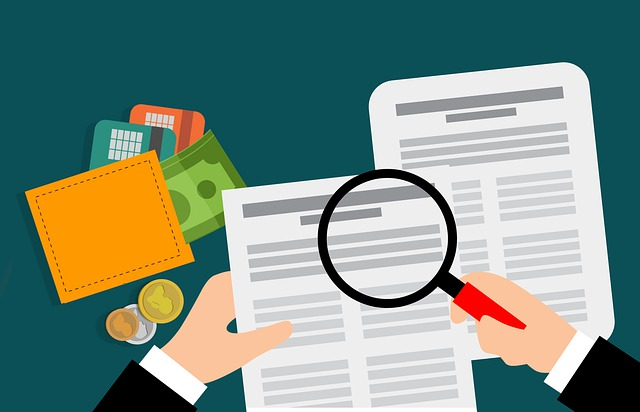What is a Profit and Loss Statement?
A profit and loss statement, also called an income statement, is a financial statement that showcases how much money a business makes and spends during a defined period. It’s one of the three essential financial statements, along with the balance sheet and cash flow statement.
This financial statement provides valuable insights into your company’s profitability. By understanding your profit and loss statement, you can make informed decisions to improve your financial performance.
Key components of a P&L or Income Statement
The three main components of a business profit and loss report are income, expenses, and net profit.
- Income: This section lists all the company’s revenue generated during a specific period. It includes sales revenue, service fees, goods sold, or any other sources of income that contribute to net operating profit.
- Expenses: Here, you record all the costs incurred to run your business. These may include rent, utilities, salaries, marketing expenses, or other expenditures.
- Net Profit: Net profit is calculated by subtracting total expenses from total income. If the result is positive, it indicates that your business made a profit during that period. If it’s negative, it means there was a net loss.
Why are Profit and Loss Statements important for businesses?
Profit and Loss Statements are crucial in understanding a business’s financial performance. These essential documents provide a snapshot of a company’s income, expenses, and overall profitability over a specific period of time.
Businesses can gain valuable insights into their financial health by analyzing profit and loss statements. Let’s take a closer look at why these statements are so important.
Tracking Business Performance
Profit and Loss Statements allow businesses to track their income and expenses accurately. They provide a clear picture of how much money is coming in (revenue) and going out (expenses). This helps entrepreneurs understand whether their business is making a profit or experiencing losses.
Identifying Areas for Improvement
Analyzing profit loss statements enables businesses to identify areas where they can improve their operations. By examining the different expense categories, such as salaries, rent, or marketing costs, entrepreneurs can pinpoint areas where they may be overspending or not allocating enough resources.
Informed Decision-Making
Profit and Loss Statements empower businesses to make informed decisions about their finances. For example, if the statement shows that the company has consistently lost money over several months, the business owner may decide to cut costs or explore new revenue streams.
Demonstrating Financial Health
Profit and Loss Statements help demonstrate the financial health of a business to potential investors, lenders, or partners. These stakeholders often rely on these statements to assess whether a company is profitable and sustainable.
What are the steps to creating a Profit and Loss Statement?
Follow this step-by-step guide to create a profit and loss statement for your business. You can also visit the SBA to download a financial statement template.
Determine the Reporting Period
Decide on the timeframe for which you want to create the statement. It could be monthly or quarterly, depending on your needs.
List All Sources of Revenue
Identify and write down all the ways your business earns money during that specific period. This could include sales, services rendered, interest, income from investments, or any other income streams.
Identify All Expenses Incurred
Make a list of all the expenses your business incurred within the chosen timeframe. This can include costs such as rent, utilities, employee salaries, and supplies.
Calculate Gross Profit
Subtract the cost of goods sold (COGS) from your total pre-tax income. This will give you an idea of how much money you made after accounting for the direct costs associated with producing goods or providing services. You must determine if the money your business spends is a cost of sales or an expense.
Deduct Operating Expenses
From your gross profit, deduct all operating expenses such as rent, utilities, salaries, advertising costs, and any other expenses directly related to running your business. This will give you your operating income or loss.
Creating a profit and loss statement is crucial for understanding the financial health of your business. It helps you analyze where your money is coming from and where it’s going.
Following these steps and using accounting software like QuickBooks Desktop or a spreadsheet program can easily generate an accurate profit and loss statement.
How do I analyze profitability using a P&L Statement?
To truly understand the financial health of a business, it’s essential to analyze profitability using a profit and loss statement. This statement provides valuable insights into revenue trends, expense categories, and key ratios that can help evaluate the overall profitability of the business.
Compare Revenue Trends: By comparing revenue trends over different periods, such as monthly or quarterly, you can gain a clear understanding of whether your business is experiencing growth or decline. If you notice consistent increases in revenue over time, it indicates healthy growth. On the other hand, if there is a downward trend in revenue, it may be necessary to investigate further and identify potential areas for improvement.
Analyze expense categories: Examining expense categories within your profit and loss statement allows you to pinpoint specific areas where costs can be reduced. By identifying disproportionately high expenses compared to others, you can focus on finding ways to minimize those costs. For example, if labor costs significantly impact your profitability, you might explore options like outsourcing specific tasks or streamlining processes to reduce overhead.
Calculate Key Ratios: Calculating key ratios such as gross margin percentage or net profit margin provides valuable insights into the overall profitability of your business. Gross margin percentage measures how much money is left after deducting direct production costs from sales revenue.
A higher gross margin indicates better efficiency in generating profits. Net profit margin measures how much profit is earned from each dollar of revenue generated after accounting for all expenses. This ratio helps determine if your business is operating efficiently and generating enough profits.
How do I determine Net Profit on the P&L Statement?
Net profit is the ultimate figure on a profit and loss statement that represents the bottom line of a business’s financial performance. It’s like the final score in a game that shows whether you’re winning or losing. This is the source of the proverbial “bottom line” in business.
Let’s break it down further:
Calculating Net Profit: To calculate net profit, we subtract all expenses from the business’s total revenue or net sales. These expenses include operating costs, taxes, and any other necessary expenditures to keep the business running smoothly.
Think of it as subtracting all the money going out from all the money coming in. If you don’t have the exact numbers, you can estimate net profit or loss using earnings before interest, taxes, depreciation, and amortization (EBITDA).
The Significance of Net Profit Margin: Net profit margin is an essential metric that indicates how efficiently a company converts its revenue into profit. It tells you how much money is left over after deducting all expenses for every dollar of revenue earned. For example, if a company has a net profit margin of 10%, it means they are keeping $0.10 as profit for every dollar they earn in revenue.
Why Net Profit Matters: Understanding net profit is crucial because it reveals how well a business is performing financially. It goes beyond just looking at gross sales and gives us insights into what’s happening behind the scenes. You can evaluate if your business strategies are effective and sustainable by analyzing net profit.
Key Takeaways
- Net profit represents the bottom line of a business’s financial performance.
- It is calculated by subtracting all expenses from total revenue.
- Net profit margin indicates how efficiently a company converts its revenue into profit.
- Analyzing net profit helps evaluate business performance and strategy effectiveness.
Frequently Asked Questions
Here are the most common questions about how to prepare a profit and loss statement.
What’s the difference between balance sheets and P&L Statements?
Balance sheets and profit and loss statements are two different types of financial statements. A balance sheet provides a snapshot of a company’s financial position at a specific time. At the same time, a profit and loss statement shows the company’s financial performance over a period of time.
Balance sheets focus on assets, liabilities, and equity. They give you an idea of what the company owns (assets), what it owes (liabilities), and how much is left over for the owners (equity).
P&L statements concentrate on revenues, expenses, and net income. They show how much money the company made from its operations (revenues), how much it spent to generate those revenues (expenses), and the resulting profit or loss (net income).
Simply put, balance sheets tell you about a company’s overall financial health at a specific moment, while profit and loss statements provide insights into its ongoing financial performance.
Understanding these two financial documents is crucial for managing business finances effectively. By analyzing balance sheets, you can assess whether your business has enough assets to cover its liabilities or if there is room for growth. Profit and loss statements help you evaluate your business’s profitability by calculating essential metrics such as gross profit margin, operating profit margin, or net profit margin.
How Often should I prepare Profit and Loss Statements?
Regularly preparing a profit and loss statement is important to keep track of your business finances. The frequency at which you should do this depends on the accounting period you follow.
The accounting period refers to the timeframe for which financial statements are prepared. It could be monthly, quarterly, or annually. Let’s take a closer look at each option:
Monthly Statements: Some businesses prepare a profit and loss statement every month. This allows them to closely monitor their finances on a regular basis. It helps identify any trends or issues that need attention.
Quarterly Statements: Other businesses prepare a profit and loss statement every three months. This provides a broader view of their financial performance over a longer period.
Annual Statements: For smaller businesses or those with less frequent financial fluctuations, preparing a profit and loss statement annually might suffice. These businesses may find it easier to analyze their overall performance by looking at yearly data.
What software can I use to create a Profit and Loss statement?
Several software options are available for creating profit and loss statements, such as QuickBooks, Xero, FreshBooks, and Zoho Books. These platforms offer user-friendly interfaces with templates specifically designed for financial reporting.
Pros & Cons of Using Accounting Software for a P&L Statement
Pros:
- Saves time and reduces errors.
- Accurate.
- Provides real-time updates.
- Easily customizable.
- Integrates with other financial systems.
Cons:
- Expensive.
- May require training.
- Potential technical issues.
- Security risks.
- Limited customization options.
Are there any specific regulations when Preparing a P&L Statement?
Most businesses follow generally accepted accounting principles (GAAP), which provide guidelines for financial reporting. However, specific regulations may vary depending on your location or industry. It’s essential to consult with a professional accountant or tax advisor to ensure compliance with relevant regulations.
Can I use my Profit and Loss Statement to obtain financing?
Yes, a well-prepared profit and loss statement can be a valuable tool when seeking financing from banks or investors. It gives them insights into your business’s financial health and helps them assess the risk associated with lending you money or investing in your venture.
How to Make a Profit and Loss Statement – Final Thoughts
You should now have a comprehensive understanding of preparing a profit and loss statement. By following the step-by-step guide provided, you are well-equipped to create an accurate and informative statement that will help you analyze your business’s financial performance.
Remember, the key components of a profit and loss statement include revenue, expenses, and net profit. Gathering all the necessary information and organizing it properly is crucial for creating an effective statement.
Contact us if you have more questions on P&L statements or to apply for a small business loan. Our alternative funding experts can help you find the best financing products for your business goals.






















